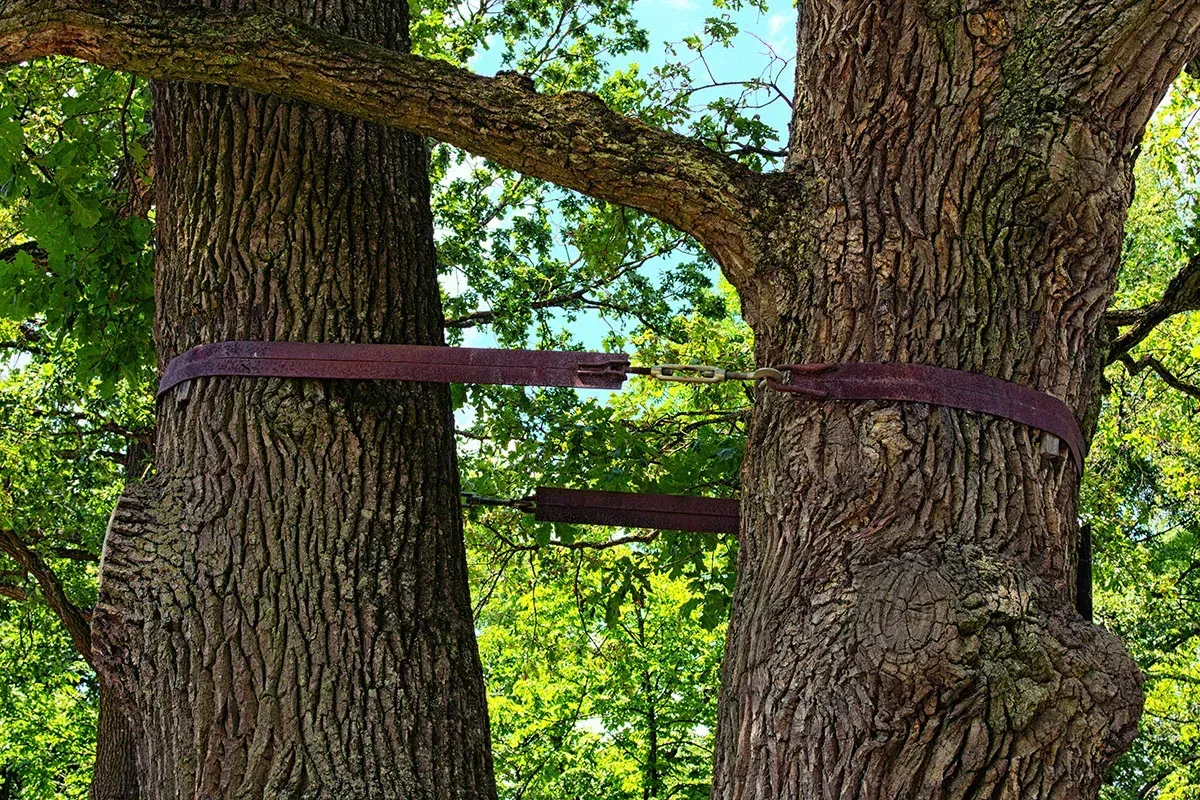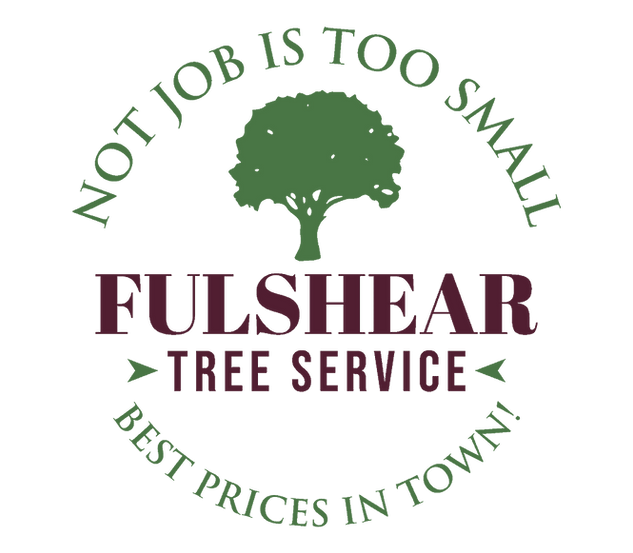How Tree Cabling Can Prevent Storm Damage to Your Trees

Understanding Tree Cabling
Before we dive into the benefits, let's start by explaining what tree cabling is. Tree cabling involves placing high-strength cables in strategic locations on your tree to support weak branches or multiple trunks. These cables are typically made of steel or other durable materials and are carefully installed to enhance the tree's structural integrity.
Unlike tree staking, which is typically used for young trees, cabling focuses on mature trees that may be at risk of damage due to wind or heavy storms. It works by reinforcing vulnerable areas, preventing branches from splitting or breaking under stress, and ultimately keeping your tree stable during extreme weather events.
How Tree Cabling Works to Prevent Storm Damage
Tree cabling is an effective method of preventing tree damage in several key ways:
- Reinforcing Weak Branches: Over time, some branches of a tree may weaken, become brittle, or grow at a sharp angle. These branches are more likely to snap during a storm. Tree cabling supports these branches, preventing them from breaking or falling, and reducing the likelihood of damage to your property.
- Improving Tree Stability: For trees with multiple trunks or complex branching structures, cabling can prevent splitting. By stabilizing the trunks or branches, the tree can better withstand the forces of high winds and heavy rainfall.
- Reducing the Risk of Falling Limbs: High winds can send branches crashing down onto roofs, vehicles, or fences. With cabling, these limbs are less likely to fall, reducing the risk of property damage and injury. It’s a proactive approach to storm protection for trees.
- Preserving Tree Health: By stabilizing weak branches, tree cabling helps your tree maintain its overall health. Without cabling, a broken branch can create an open wound, which may invite disease or pests. Cabling helps minimize these risks by preventing breakage and the resulting stress on the tree.
Benefits of Tree Cabling for Storm Safety
1. Protects Property and People
The primary benefit of tree cabling is that it helps protect your property. Trees with weak or overextended branches are more likely to cause damage during a storm. By cabling your trees, you’re preventing branches from crashing down on your house, car, or other structures. This provides peace of mind, knowing your property is better protected.
2. Increases the Longevity of Your Trees
A healthy tree can live for many years, but weak branches or unstable trunks can shorten its lifespan. Tree cabling gives your trees the support they need to survive storms and grow stronger over time. This investment ensures your trees stay healthy and functional for years to come.
3. Reduces Storm-Related Maintenance Costs
Fallen limbs can cause significant damage, leading to costly repairs. Tree cabling reduces the need for extensive clean-up after a storm and helps avoid the costly repairs that come with broken trees. It’s a smart way to reduce long-term maintenance costs associated with storm damage.
4. Provides a Safe Landscape
One of the top reasons to invest in tree cabling is safety. Branches that are left unsupported during a storm may fall unexpectedly, causing harm to people, pets, or wildlife. Cabling ensures the stability of the tree, creating a safer environment for your family and neighbors during stormy conditions.
When Should Tree Cabling Be Installed?
Tree cabling should ideally be done before a storm occurs, but it can be effective at any time of year. The best time to install cables is when your tree is healthy but showing signs of weakness. If you notice that certain branches are leaning heavily, growing at awkward angles, or showing signs of decay, cabling can help.
In some cases, a tree may already have experienced storm damage. Cabling can be installed as part of the recovery process, helping to prevent further damage from occurring in future storms.
Is Tree Cabling Right for Every Tree?
Not all trees are suitable candidates for cabling. Before recommending this service, we evaluate the overall health of the tree. Trees with serious diseases or pest infestations may not benefit from cabling. Additionally, very old or heavily damaged trees may need to be removed instead of reinforced.
We also take into account the tree’s location. Trees growing too close to power lines or structures may not be ideal candidates for cabling. Our team will conduct a thorough assessment to determine if cabling is the right option for your trees.
Professional Tree Cabling Installation
While tree cabling can be an excellent solution for storm protection for trees, it’s important to have a professional install the cables. Improper installation can lead to additional strain on the tree, and in some cases, can do more harm than good. A professional tree service will ensure the cables are installed in the right locations, with the proper tension, and in a way that maximizes the tree’s stability.
Our team at Fulshear Tree Service is trained to assess your trees and determine the best cabling strategy. We’ll evaluate your landscape and provide you with the most effective solutions to protect your trees from storm damage.
How Tree Cabling Works With Other Storm Protection Methods
While cabling is highly effective, it’s often used in conjunction with other storm protection techniques. Some additional methods to consider include:
- Pruning: Regular pruning helps remove weak or dead branches before they become a hazard.
- Tree Bracing: For trees with multiple trunks or a structurally weak base, bracing can provide additional support.
- Mulching and Watering: Healthy trees are better equipped to withstand storms. Proper care, including mulching and watering, helps trees remain strong and resilient.
By combining these methods with tree cabling, you’re taking a comprehensive approach to preventing tree damage during storms.
Investing in Storm Protection for Your Trees
Tree cabling is an essential service for anyone looking to safeguard their trees and property from storm damage. By strategically reinforcing branches and trunks, cabling helps prevent storm damage while preserving the health and strength of your trees. It’s a proactive solution that reduces the risk of fallen limbs, property damage, and costly repairs.
If you want to protect your landscape during extreme weather events, we encourage you to consider tree cabling for storm safety. At
Fulshear Tree Service, we specialize in providing expert tree care services, including cabling, pruning, and storm preparation.
Contact us today to schedule a consultation, and let us help you keep your trees safe and secure for years to come.
Frequently Asked Questions
1. What is tree cabling and how does it help with storm protection for trees?
Tree cabling is a method used to strengthen and stabilize weak or overextended branches by installing high-strength cables. This technique helps with storm protection for trees by reinforcing vulnerable limbs, preventing them from breaking during strong winds or heavy rainfall. It provides extra support to trees, reducing the risk of tree damage during storms.
2. How does tree cabling prevent tree damage during storms?
Tree cabling for storm safety works by securing branches and trunks that are at risk of splitting under the stress of high winds. By strategically placing cables, weak areas of the tree are supported, reducing the chance of broken branches falling on property or causing injury. This reinforcement helps maintain the tree's structural integrity during severe weather conditions, ultimately preventing tree damage.
3. When should I consider tree cabling for storm safety on my trees?
It’s best to consider tree cabling for storm safety when your tree shows signs of weakness, such as leaning branches, multiple trunks, or brittle limbs. If your tree is situated in an area prone to storms, cabling can help prevent future tree damage. Early intervention can prevent significant problems down the line, especially before a storm hits.
4. Are there any other methods to complement tree cabling for preventing tree damage?
Yes, there are other storm protection methods that can complement tree cabling for storm safety. Regular pruning to remove weak or dead branches, proper watering, and mulching to maintain tree health are all important steps in preventing tree damage. For trees with multiple trunks or complicated branching, additional bracing can also be used to improve stability.
5. Can tree cabling be installed on any type of tree for storm protection?
While tree cabling for storm safety is effective for most mature trees, not all trees are suitable candidates. Trees with severe diseases, pests, or structural damage may not benefit from cabling. It’s important to have a professional assess the tree’s health before installation to ensure that cabling will be an effective method for preventing tree damage.
Let’s talk!
We also offer 15% off to new customers, veterans and first responders. Speak with a team member today to see how we can help.
Contact Details
Phone: (832) 720-3302
Our Location: Rosenberg, TX 77471, United States of America
Email: ocanaslawnservice@gmail.com

